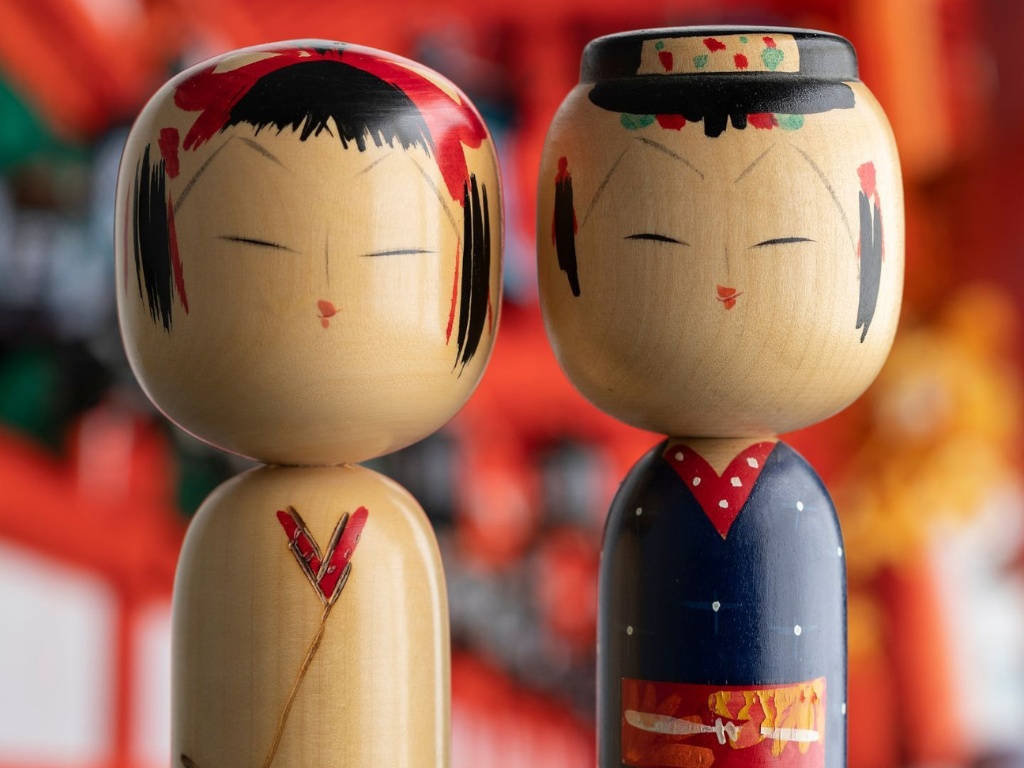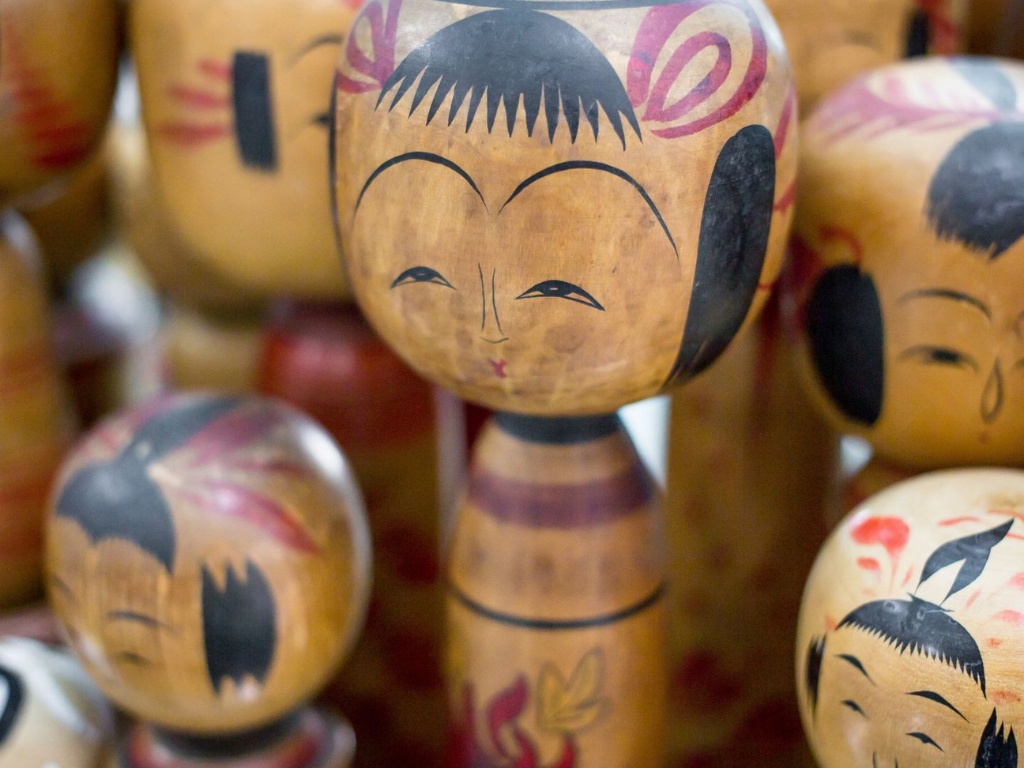Kokeshi Dolls (こけし, 小芥子): A Journey into Japanese Tradition
Kokeshi Dolls are traditional Japanese wooden dolls that combine simplicity with beauty and symbolic value. Originating from northern Japan, these dolls have a long history and have become symbols of Japanese culture. In this article, we will examine the history, construction, and cultural significance of Kokeshi Dolls, as well as how these dolls continue to inspire and fascinate people today.
History of Kokeshi Dolls
The first Kokeshi Dolls appeared during the Edo period (1603-1868) in the Tōhoku region of northern Japan. These dolls were originally created by carpenters (kijiya) who specialized in making wooden utensils and furniture. These craftsmen began creating Kokeshi as toys for the children of farmers, but soon these dolls acquired other uses and symbolism.
Kokeshi Dolls are also believed to have roots in the religious and spiritual traditions of Japan. In some cases, they were used as talismans for good luck or as symbols of protection. Over time, Kokeshi Dolls have evolved from simple toys to elegant works of art that honor Japanese cultural heritage.
Manufacture of Kokeshi Dolls
Kokeshi Dolls are made from various types of wood, such as cherry, maple and pine. The process of making them is quite complicated and requires great skill. Artisans first cut and shape the wood into a cylindrical shape for the body and a spherical shape for the head. The two pieces are then carefully joined and sanded.
After making the basic shape, Kokeshi are decorated with colours and patterns. Classic Kokeshi have simple lines and geometric patterns, while more modern versions may have intricate and detailed decorations. Kokeshi faces are usually expressive and carefully painted, reflecting the emotions and personality of each doll.
Types of Kokeshi Dolls
Traditional Kokeshi (Dento Kokeshi): These dolls remain faithful to the original forms and construction techniques handed down from generation to generation. Each region of northern Japan has its own distinct style of traditional Kokeshi, with distinctive colors and patterns. The most famous areas of traditional Kokeshi making are Naruko, Tsuchiyu and Yajirō.
Creative Kokeshi (Shingata Kokeshi): These dolls are more modern and allow greater artistic freedom to their creators. Creative Kokeshi can have a variety of designs, colours and shapes, reflecting the imagination and personal style of the craftsman.
Cultural Importance of Kokeshi Dolls
Kokeshi Dolls have deep cultural significance in Japan. They are considered symbols of childhood innocence and simplicity, while also carrying spiritual and religious value. They are often offered as gifts for good luck, health and prosperity. In some areas of Japan, Kokeshi are also used in traditional ceremonies and celebrations.
Kokeshi Dolls have also become popular collectibles and are displayed in museums and art galleries around the world. The art of Kokeshi making continues to evolve, with new artists adding their own touches and updating the tradition.
The Kokeshi in Modern Culture
Today, Kokeshi Dolls continue to charm people with their simplicity and beauty. Beyond their traditional use, Kokeshi have been incorporated into other forms of art and culture. Modern artists are inspired by Kokeshi to create new works of art, while collectors seek out rare and unique pieces for their collections.
Kokeshi Dolls have also become popular internationally. Tourists visiting Japan often buy Kokeshi as souvenirs, while online sales allow Japanese culture enthusiasts from around the world to get their own Kokeshi. These dolls are also a popular theme in products such as clothing, jewellery and decorative items.
The Timeless Value of Kokeshi Dolls
The timeless value of Kokeshi Dolls lies in their ability to combine simplicity with expressiveness. Each Kokeshi is unique, created with love and attention to detail by its artisans. These dolls are a link to the past, while continuing to evolve and adapt to contemporary trends.
Kokeshi Dolls are not just decorative objects, but also symbols of Japanese tradition and cultural heritage. They represent the purity, simplicity and artistic craftsmanship of Japan. As the global community continues to appreciate Japanese culture, Kokeshi Dolls remain a beloved and timeless treasure.
The reason we love Kokeshi Dolls
Kokeshi Dolls are more than just wooden dolls. They represent a deep tradition and cultural heritage that has been passed down from generation to generation. From their roots in the Tōhoku region of northern Japan to their global appeal today, Kokeshi Dolls continue to inspire and charm people with their simplicity and beauty. These dolls are living works of art that connect the past with the present and showcase Japan's rich cultural tradition.
See
here the famous Kokeshi Museum in Japan:
See
here the MOMO KIDOHO Tote Bag dedicated to the Kokeshi Dolls.

